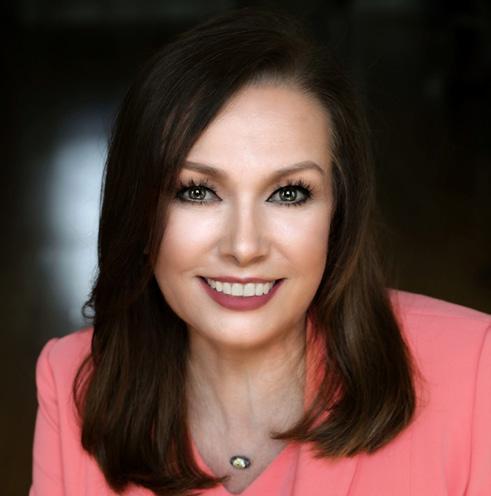
3 minute read
Naloxone and the opioid epidemic
MAG FOUNDATION ‘THINK ABOUT IT’ INITIATIVE
‘Hey, Doc, did you forget something?’ Naloxone and the opioid epidemic
By Susan K. Blank, M.D., FAPA, DFASAM, FABPM-ADM, MRO
Susan K. Blank, M.D.
Dr. Smith, a pain management physician, is seeing Ms. Jones for chronic pain management. Dr. Smith had reviewed her medical records and imaging studies and checked for her name in the Georgia Prescription Drug Monitoring Program data base. He checked her history of pain, her prior treatments and interventions, her current pain level, and any limitations that she has as a result of her pain. Dr. Smith also explored lifestyle issues like sleep, diet, exercise, depression, and addiction for both Ms. Jones and her immediate family. He wanted to know what her expectations were (i.e., her reasonableness) when it came to the relief that he could provide. Dr. Smith performed a physical exam and had her urine tested for medications and illicit substances. After discussing the risks and benefits associated with the medication, Dr. Smith agreed to prescribe an opioid for Ms. Jones. They reviewed his opioid contract and the need for drug testing, pill counts, and clearing any new medications or supplements with him. Ms. Jones signed the contract and Dr. Smith wrote the prescription. Before he left, Dr. Smith reviewed safe medication storage and disposal procedures, he asked her to check in with him in two to three days to review the drug’s effectiveness and side effects, and he had her schedule a follow-up appointment in a week. This sounds like an appropriate visit, right? Well, not so fast. Dr. Smith should be aware that Georgia pharmacists are allowed to dispense naloxone (aka Narcan) without a prescription based on a standing order of Georgia Department of Public Health Commissioner Kathleen Toomey, M.D. 1
Of course, this would apply to Ms. Jones. Dr. Smith should have also discussed the risk of overdose with Ms. Jones, who was getting an opioid prescription for the first time. The odds that she knew that she could ask her pharmacist for a naloxone prescription was low. According to a study that was conducted by the University of Michigan and the VA Ann Arbor Healthcare System that was published in the Journal of General Internal Medicine in January, 2020, 2 less than two percent of the patients who are at risk for an opioid overdose actually get a naloxone prescription from their doctor, Dr. Smith should have written Ms. Jones a prescription for naloxone along with instructions on when and how to use it when he gave her an opioid prescription. According to the Centers for Disease Control and Prevention, patients who take opioid dosages at or above 50 MME (morphine milligram equivalents) per day are twice as likely to overdose as those taking dosages of 20 MME/day. Furthermore, the risk increases as the MME/day increases. Prescribing naloxone for at-risk patients and co-prescribing naloxone for patients who are taking opioids for pain that meet or exceed this threshold has the potential to save lives. 3
While opioids can provide useful pain relief to many patients, they still pose a very real risk for addiction, overdose, and death – as well as the potential to be misused by family members. We must maintain an “all hands-on deck” approach to reduce overdose deaths by providing prescriptions for naloxone. 3
In 2018, the U.S. Surgeon General called for greater awareness and the increased availability of naloxone. The data clearly indicates that there is a significant, persistent gap in our response due to the infrequent co-prescribing of naloxone when a patient is given a prescription for opioids, even for shortterm use. When they take their pain medications as prescribed, these patients are at increased risk of accidental overdose as well as drug-alcohol or drug-drug interactions with sedating medications, such as benzodiazepines. 4
The evidence is clear: doctors are writing fewer prescriptions and taking extra precautions to stem the tide of opioid misuse. Please continue to do your part and write naloxone prescriptions to help prevent opioid overdoses and save lives. Dr. Blank is the immediate past president of the Georgia Society of Addiction Medicine, the chair of the MAG Foundation’s ‘Think About It’ initiative to reduce opioid misuse, and a member of the Technical Expert Panel for the U.S. Preventive Services Task Force Guidelines for Alcohol, Tobacco, and Influenza.
References
1.
2.
3.
4. Georgia Pharmacy Association- Naloxone without a prescription. https://wwwgpha.org/ Naloxone “Association of Opioid Overdose Risk Factors and Naloxone Prescribing in U.S. Adults” Journal of General Internal Medicine, DOI: 10.1007/s11606-019-05423-7 Centers for Disease Control and Prevention. Preventing an Opioid Overdose Tip Card, Available at https://www.cdc.gov/drugoverdose/pdf/patients/Preventing-an-OpioidOverdose-Tip-Carda.pdf Surgeon General’s Advisory on Naloxone and Opioid Overdose. 2018 https://www.hhs.gov/ surgeongeneral/priorities/opioids-and-addiction/Naloxone-advisory/index.html










